Jeep Compass still here, finds bold new path
By John Gilbert
Jeep’s ever-expanding world of hardy, all-terrain vehicles, the descending order of size and capability has been: Grand Cherokee, Cherokee, Patriot, Compass, Renegade, Wrangler. Or something like that, with the Wrangler probably the most capable off-roader, but also the most limited as far as all-purpose highway use goes.
When the Cherokee came out, it was an instant knockout, selling like hotcakes because it would do all the things the Grand Cherokee would do on the road, and would come close to duplicating the Wrangler’s off-roading. When the Renegade came out, as a cute, squarish little Jeep, it also proved surprisingly capable and is a great example of hoe effective the collaboration between Jeep and Fiat can be.
All of which made me think that the Patriot and Compass were probably destined to be eliminated. The Compass has been a lightweight vehicle, good for commuting and moderate foul-weather usage, but nowhere near as hardy as the Cherokee above it and the Renegade below.
Shows what I know.
For 2017, Jeep not only is keeping the Compass around, it has given it an entirely new life, from every standpoint — looks, styling, and capability. In fact, some critics think the narrow-eyed Cherokee looks like a rebel among the other Jeep vehicles, and for them, the new Compass takes on a more traditional Jeep look. You could make the case that the Compass now looks like a downsized Grand Cherokee.
Recently I was able to live with a new Compass for a week of driving on the cliffside hills of Duluth and the gently winding roadway along the North Shore of Lake Superior. In traffic and up hills, the Compass performed very well, never lacking for power or performance.
Under the hood is the now-familiar 2.4-liter Tigershark 4-cylinder engine, a jewel of a powerplant originally designed in joint venture by Hyundai in South Korea and used by Mitsubishi as well as Chrysler as its base engine for compact cars. With Fiat ownership, the adaptation of that company’s brilliant MultiAir system works fantastically well on the 2.4. That system starts with dual overhead camshafts, one for intake and one for exhaust, and then eliminates the intake cam, instead using a system of oil-filled tubes that connect exhaust valves with intake valves. Everytime the exhaust valves work, they force the intake valves to work too, in computer-perfect concert.
The result is an almost-turbocharged like increase in power and performance. As tested, the 2.4 with MultiAir2 offers 180 horsepower and 175 foot-pounds of torque — easily enough to send the Compass Latitude 4X4 on its appointed rounds, aided by its 9-speed automatic transmission.
Just ahead of the floor shift lever there is a round knob, and turning it gives you selection of automatic, snow, sand, or mud. Obviously, Duluth in March gave me ample chance to conquer a driveway coated with ice and a rural highway covered by snow, with the appropriate pile of chunky snow pieces from passing snowplows that tried in vain to prevent us from escaping.
There is adequate room for four adults, five in a pinch, and a surprisingly expansive storage area behind the split-folding rear seats. Painted “Redline Red,” it was easy to spot the Compass coming, and the tasteful black interior made it a classy and sporty vehicle.
My wife, Joan, is never one to be intrigued by pre-supposed opinions about cars. My one disclaimer is that she loves red vehicles, so the Compass had a head start. “I love that car,” she said. “It has great styling, and I while I like all the Jeeps’ styling, I like this one the best. Maybe because it’s a little smaller, I found it easier to handle in traffic.”
And, she didn’t say, it’s also a great shade of red.
Highway handling is excellent, with independent MacPherson struts up front and a multi-link rear suyspension with coil springs. Interior appointments include a Beats speaker suystem on the audio system, full connectivity for electronic gizmos, a good navigation system, and Apple Car Play, or Android Auto if you are so equipped.
You also have to love Jeep. Just in case you wonder if it really is capable, your information is pretty convincing. It shows an approach angle of 16.8 degrees, a breakover angle of 22.9, departure angle of 31.7.
It comes at a base price of $24,295, which is extremely reasonable for a fully capable 4X4 wearing Jeep livery. With the popular equipment group and all the electronic and connectivity potential, the sticker rose to $30,115. Still a bargain, for what you get, even if you never have to churn those 17-inch polished alloy wheels in anything more challenging than ice in the driveway and a pile of chunky snow for a barricade to the real world.
Everybody at Jeep has worked long hours to brush away the stubborn image of quality control and quality from years ago. From what I’ve seen in frequent test drives of all the brand’s vehicles, the tightness of build quality and firmness of handling has never been this good before. With fuel efficiency rated at 30 miles per gallon highway driving, plus firmly comfortable seats and its slick new styling, the suspected new-vehicle satisfaction should make any buyer very happy that the company had a better idea than to discontinue the Compass.


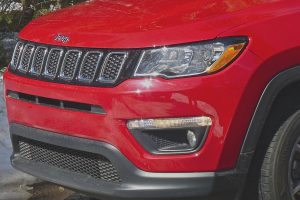
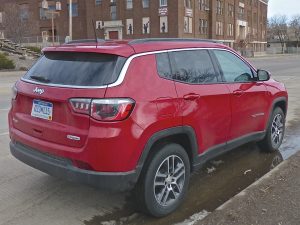
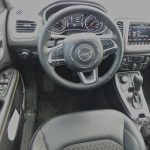
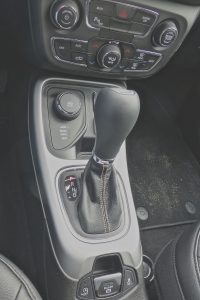
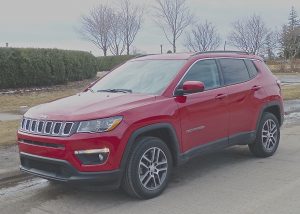

 John Gilbert is a lifetime Minnesotan and career journalist, specializing in cars and sports during and since spending 30 years at the Minneapolis Tribune, now the Star Tribune. More recently, he has continued translating the high-tech world of autos and sharing his passionate insights as a freelance writer/photographer/broadcaster. A member of the prestigious North American Car and Truck of the Year jury since 1993. John can be heard Monday-Friday from 9-11am on 610 KDAL(www.kdal610.com) on the "John Gilbert Show," and writes a column in the Duluth Reader.
John Gilbert is a lifetime Minnesotan and career journalist, specializing in cars and sports during and since spending 30 years at the Minneapolis Tribune, now the Star Tribune. More recently, he has continued translating the high-tech world of autos and sharing his passionate insights as a freelance writer/photographer/broadcaster. A member of the prestigious North American Car and Truck of the Year jury since 1993. John can be heard Monday-Friday from 9-11am on 610 KDAL(www.kdal610.com) on the "John Gilbert Show," and writes a column in the Duluth Reader.